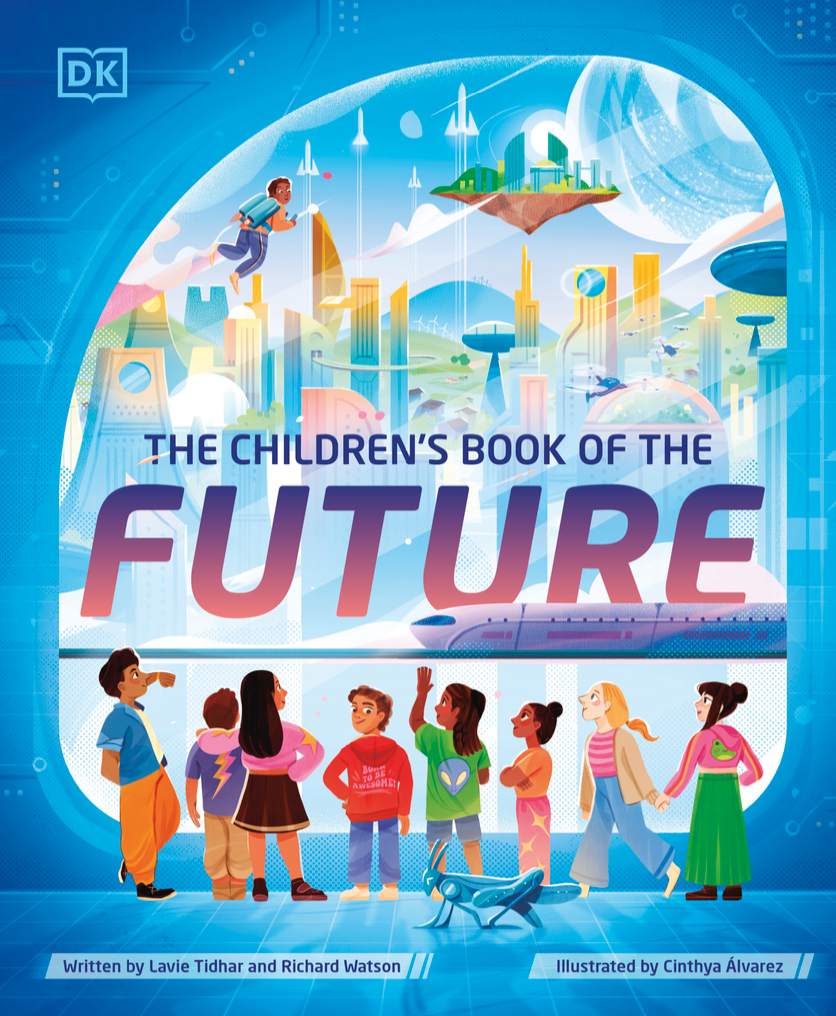Pre-order the future here. Publication date in the UK is June 5. US is June 25 I believe.
https://www.dk.com/uk/book/9780241647479-the-childrens-book-of-the-future


Pre-order the future here. Publication date in the UK is June 5. US is June 25 I believe.
https://www.dk.com/uk/book/9780241647479-the-childrens-book-of-the-future

I spent yesterday with the MOD discussing what the world might look like in 2040. There were presentations on Sub-Saharan Africa and South and Central Asia along with an interesting discussion on the role of identity and how globalisation and the internet may be changing how individuals and groups see themselves. If anyone is interested there is a public domain document on some of the work to date that I can share.
Other thoughts…
Did anyone see Channel 4 News (UK) last night? There was a somewhat alarming piece on the emergence of a movement called Golden Dawn in Greece. Essentially, the economic downturn and austerity measures have released a surge of nationalism and racist violence. Even the police seem to be drawn into this by, in the first instance, questioning anyone that doesn’t look Greek and, in the second, locking up anyone that is in the country illegally. Tolerance, it seems, has gone out of the window.
This not only links with alienation and the rightwards shift of politics in Europe (especially the emergence of far-right parties), it also seems to have parallels with the 1930s and the second emergence of the KKK, which if my political memory serves me correctly, was fundamentally linked to austerity in the US.
Links: My blog post November 2011 about parallels with the 1930s
Here’s a little taste of the next What’s Next report out soon….
You may not have noticed this but we are becoming increasingly fascinated with the undead. Over the past few years, TV shows and computer games about Zombies have been invading movie theatres, living rooms and computers.
So what’s going on here? Why are we so interested in something that can’t talk and doesn’t mind getting shot? Perhaps it’s not what these creatures are but rather what they represent. Maybe zombies (and vampires) represent a subconscious fear about the consequences of untethered scientific research? Or maybe it’s to do with a fear of disease (vampires equals HIV/Aids, SARS or perhaps a loss of purity and innocence).
Better still, what if our fascination with the undead is rather related to how we feel about everyday life? Maybe Night of the Living Dead is analogous with working late at the office? You might even draw parallels between blasting 200 zombies with an automatic rifle and rapidly deleting hundreds of emails in the office on a Monday morning. You can spend all day doing either, but like tweets and Facebook updates they just keep on coming.
I think that’s it. On a superficial level there is pleasure in just destroying things, but at a deeper level what these things represent is the Internet.
We are fearful about the Internet – and perhaps machines in general – consuming us rather than the other way around. It is about having our life (our souls) taken away from us by things that cannot be deleted, cannot be paused and cannot be ignored.
Things that won’t talk to us and don’t seem to understand what it means to be human.
If you aren’t nervous enough already, here’s something else to worry about. In December 1929, at the time of the Great American stock market crash, America suddenly fell victim to a pandemic. The disease, called psittacosis, had been known about since 1892, but such was the state of that fear that gripped the nation in 1929 that it’s existence and threat was blown out of all proportion.
On 6 January 1930 a doctor that examined one of the first cases sent a telegram to the US Public Health Service in Washington DC that read; “Can you please supply parrot fever serum for our disposal immediately.” Further panic about contact with diseased birds then ensued. One US Admiral even ordered sailors to toss their pet parrots overboard, while the New York Times ran a front page that read: “Parrot Fever Kills 2 in this country.”
There were 169 confirmed cases of parrot fever in the US and 33 Americans eventually died. So was America in 1929 a dangerous place or just a gullible one? Parrot fever exists today in the US (and elsewhere) and infects between 100 and 200 Americans every year. The only difference is that over-exposure to social media is currently spreading economic anxiety rather than parrot fever.
